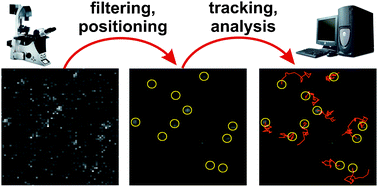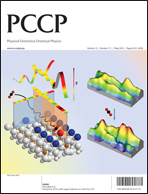A novel method for automatic single molecule tracking of blinking molecules at low intensities†
Abstract
Single molecule tracking provides unprecedented insights into diffusional processes of systems in life and material sciences. Determination of molecule positions with high accuracy and correct connection of the determined positions to tracks is a challenging task with, so far, no universal solution for single fluorescing molecules tackling the challenge of low signal-to-noise ratios, frequent blinking and photo bleaching. Thus, the development of novel algorithms for automatic single molecule fluorescence tracking is essential to analyse the huge amount of diffusional data obtained with single molecule widefield

- This article is part of the themed collection: Biophysics and biophysical chemistry in PCCP

 Please wait while we load your content...
Please wait while we load your content...